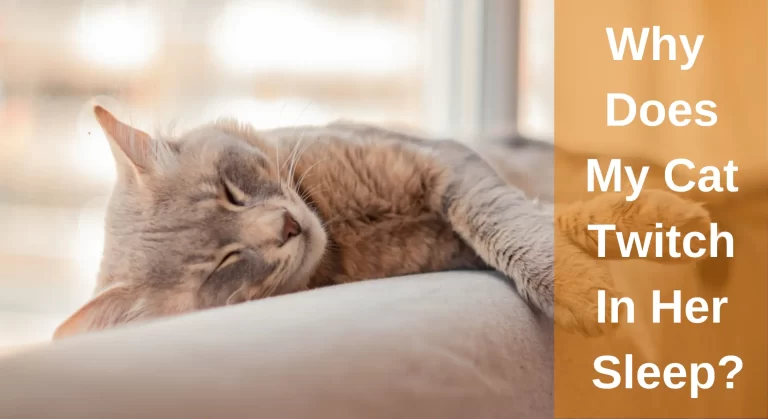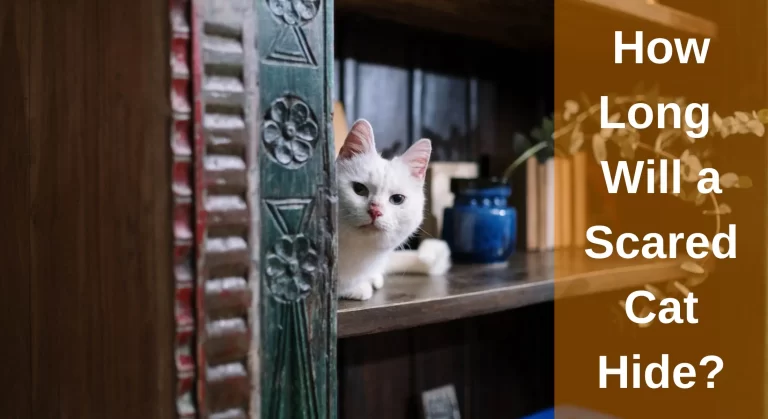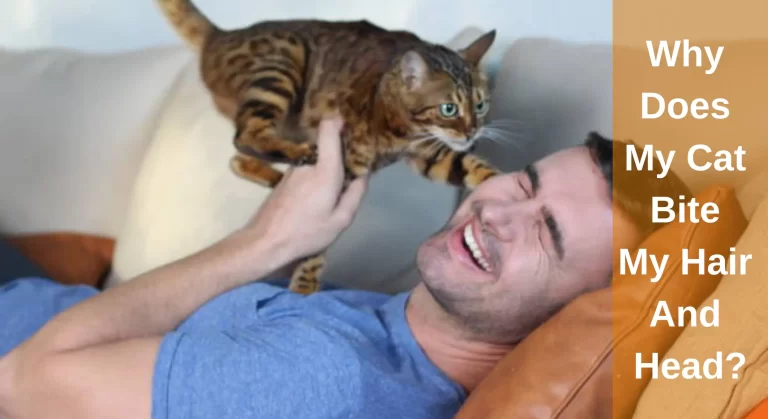Do Cats Purr When They Are in Pain? – Learn the Facts About Purring
Cats are renowned for their ability to create a gentle and comforting sound referred to as purring, which cat owners frequently associate with contentment and rest. Nevertheless, a lingering argument still exists regarding whether cats purr when they are experiencing pain.
Do cats purr when they are in pain? The answer to this question is yes; cats can purr when they’re in pain. cats can purr when they’re in pain. Occasionally, cats may use purring to calm themselves when they’re undergoing discomfort. Additionally, it could be a mechanism for felines to communicate their pain to their owners or other cats. Some experts believe that purring may be a way for cats to stimulate the release of endorphins, which are natural painkillers.
In this article, I’ll delve into the topic of cats and pain, explore the purpose and function of purring, and shed some light on the relationship between purring and pain. I’ll also discuss some more discomfort indicators you should be aware of so you can determine when your cat requires a little extra gentle, loving care.
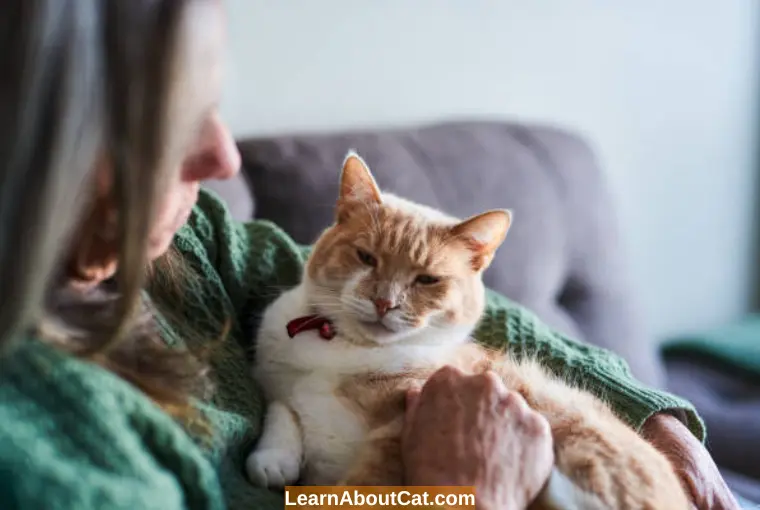
Understanding Pain in Cats
Pain is an unpleasant sensation that animals and humans experience when there is damage or injury to tissues and organs. Cats, like any other animal, can encounter pain, which can manifest in different ways based on the cause and severity of the illness or injury.
How Can I Tell if a Cat is in Pain? Signs of Pain in Cats
Cats do purr when they are in pain, but this is not the sign you should be looking for. Cats also purr for a number of reasons, including happiness, overstimulation, bonding, and even dreaming. Therefore, you should look for more overt and obvious signs of pain.
Cats can display a variety of signs when they are in pain. Some of the most common signs include:
Sleeping postures: Sick cats may take on specific sleeping positions that are obvious signs of their suffering and agony. For instance, whereas the cat loaf position may indicate a paw injury, the meatloaf position might indicate significant pain and renal failure.
Hiding: When they are uncomfortable, many cats may spend time under beds, on couches, or even in closets. Since hiding is frequently a highly telling symptom, especially if it’s unusual behaviour for your cat, keep an eye out for it.
Changes in appetite: If your cat’s food habits alter, you can quickly identify a problem. If your cat isn’t eating much but otherwise seems to be in good condition, it can be having tooth pain or experiencing digestive discomfort.
Lethargy: Cats in pain will seem more worn out than usual since their bodies are conserving energy to help them heal. If they have an injury or another ailment that makes movement unpleasant, it may be harder for them to move and engage in physical activity.
Behaviour modifications: If your cat suddenly acts more aggressively than usual, particularly while being petted, it could be in discomfort. The pain will make them irritable. Additionally, touching the wound could make your cat feel worse and cause a response.
Grooming habits: Changes to grooming habits frequently happen as well. If your cat gets bored, she can stop grooming herself altogether. On the other hand, they can over-groom the sore and unpleasant area, which would cause itchiness and hair loss.
In addition to purring, cats often produce various noises when they are in pain. They typically begin making additional vocalisations, sometimes in loud, furious meows. Along with this, hissing and growling are frequently audible.
What is Purring?
Purring is a unique sound produced by felines that arises from the vibration of the larynx and diaphragm, creating a low and rumbling sound.
Types of Purrs and Their Meanings:
There are several different types of purrs, each with its own meaning. Some of the most common types of purrs include:
- Contentment purr: This is the most common type of purr and is associated with happiness and relaxation.
- Solicitation purr: This purr is often used by kittens to solicit food or attention from their mother.
- Attention-seeking purrs: Cats may use these purrs to get their owner’s attention.
- Frustration purr: This purr is often heard when a cat is frustrated or anxious.
- Pain purr: Some researchers believe that cats can produce a different type of purr when they are in pain.
Can Cats Purr When in Pain?
One of the most argued topics in feline conduct is the idea of whether cats can purr while experiencing pain. Some people hold the belief that cats only purr when they are delighted and content, while others argue that cats can also purr when they are in pain. So, can cats purr when they are in pain? Let’s analyze more closely.
Relationship between Purring and Pain:
Scientific evidence on purring and pain: There is some scientific evidence to suggest that cats may produce a different type of purr when they are in pain. This type of purr has been called the “pain purr” and is characterized by a higher frequency and intensity than the contentment purr.
The “pain purr” has been studied in a few small-scale studies, but there is still limited research on this topic. Some researchers believe that this type of purr may have a therapeutic function and may help cats manage their pain.
Purring is thought to provide therapeutic benefits that might help your cat feel more at ease and recover more quickly. The frequency of the vibrations and how they influence the subject’s body holds the secret to this.
Studies and Research Findings
Various studies have been conducted to ascertain whether cats can purr when they are in pain. The Journal of the American Veterinary Medical Association published a study that found cats who were experiencing painful procedures, such as drawing blood, were more prone to purring than those that did not undergo a painful process. This suggests that cats can indeed purr when they are experiencing pain.
Research suggests that a cat’s purr may have therapeutic benefits. According to one study, all cats purr at frequencies between 25 to 150 hertz, which are used in therapeutic treatments for bone formation, wound healing, and pain relief. Additionally, purring could benefit cat owners’ cardiovascular health.
How Do Purrs Help Cats in Pain? The Role of Purring in Pain Management
Purring facilitates healing by reducing the stress brought on by pain. But how? Why does purring have such incredible physical therapeutic benefits?
Actually, there are several ways that purring might help a cat feel better. This explains why purring is advantageous for a variety of ailments and wounds.
It could also shed some light on why cats are known for fast recovering from injuries and shattered bones; the purr is involved! Here is a thorough analysis of all the ways that purring encourages healing and pain reduction.
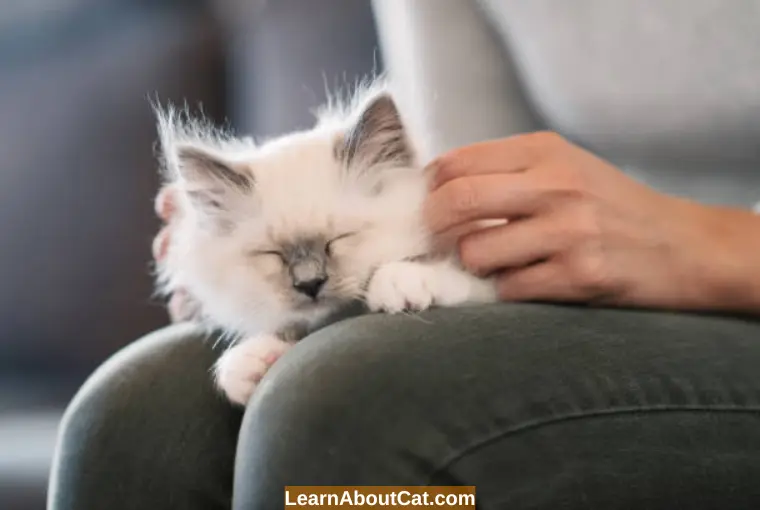
1. Purring Acts as Vibrational Therapy
Simply put, a purr is an ongoing vibration produced by the rapid vibrating of the voice cords brought on by the twitching of the laryngeal muscles. This causes vibrations to occur between 25 to 150 times per minute, producing the well-known and adored rumbling purring sound.
The vibration frequency of a purr ranges from 25 to 150 Hz, the same range as that used in vibrational therapy for human health. A vibrating device is placed on a certain location of the body in order to impart vibrations to that area and the muscles under the skin.
The muscles rapidly contract and relax as a result of these vibrations. Numerous benefits resulted from this, including improved blood flow to the muscles and accelerated healing of strained or torn tendons and muscles. Additionally, improved circulation lowers muscle discomfort by facilitating quicker blood flow to the injured region.
2. Purring Releases Endorphins
Endorphins are substances found in the brains of cats that are responsible for producing motivation and happy emotions.
This explains why cats purr when they are happy since doing so causes them to release more endorphins, which makes them feel even better.
Therefore, purring is often connected with happiness and contentment. Due to the analgesic effects of these hormones, pain perception is diminished. Therefore, endorphins work as a natural analgesic in the nervous system of your cat.
3. Purring Makes Breathing Easier
When a cat has respiratory issues, breathing might be difficult for them. Surprisingly, several studies have found that purring also helps with this! It won’t help with allergies, but it can enable a cat whose breathing is laboured as it sleeps to resume a normal breathing rhythm. However, it does rely on the specific type of breathing issues.
Since both endorphins and vibrations have a calming effect and ease tension, they are both thought to have this therapeutic ability. Additionally, the repeating vibrations help your cat’s lungs breathe at a steady rate.
Find Out: Do Cats Stop Purring When They are Dying?
Purr and Pain
For a very long time, people who like cats, veterinarians, and scientists have all pondered why cats purr. The most well-known component is pleasure and fulfilment. For instance, it’s common for cats to purr as a show of contentment and loyalty when you pet them.
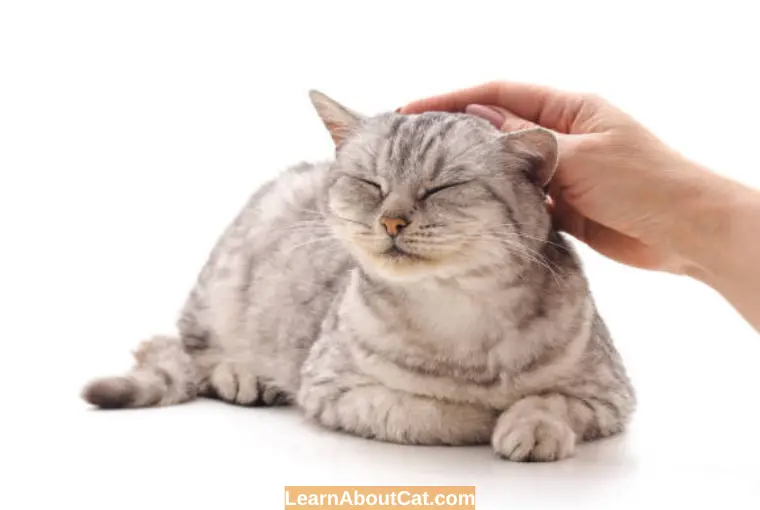
Other Reasons for Purring
- Dreaming: The fact that cats dream, like humans, is one of the most frequent reasons for their midnight purring. Though we might never discover what they are dreaming of! According to studies, two cats who purr simultaneously are bonding. Moms and kittens create strong familial relationships by purring to one another in a manner similar to this.
- Overstimulation: Cats frequently purr when humans pet them to show that they are comfortable, but they can also purr to show discomfort or overstimulation.
- Pain: Another thing that makes purr is pain. Both physical pains from an illness or injury and mental suffering from worry or fear might be experienced. A relaxing trait of cats is their purring. As a result, when cats are nervous or in pain, they purr to help themselves feel better.
- Healing: Additionally, it’s thought that purring contains healing qualities that might speed your cat’s recovery from the illness or condition that’s ailing it. All of this is connected to the purring’s vibrational frequency.
Check Out: Can Cats Control Their Purring?
Common Causes of Pain in Cats: Painful Conditions That Cats Often Experience
Everything that your cat does, including its behaviour, breathing, heart rate, and even looks, may change when it is in pain.
Even while it makes sense that your cat would feel pain from a broken bone, an open wound, or a surgical procedure, they aren’t the sole sources of pain. There are a number of other common illnesses that cause discomfort but are commonly misdiagnosed by cat owners since we are unable to ask about our animals’ current health.
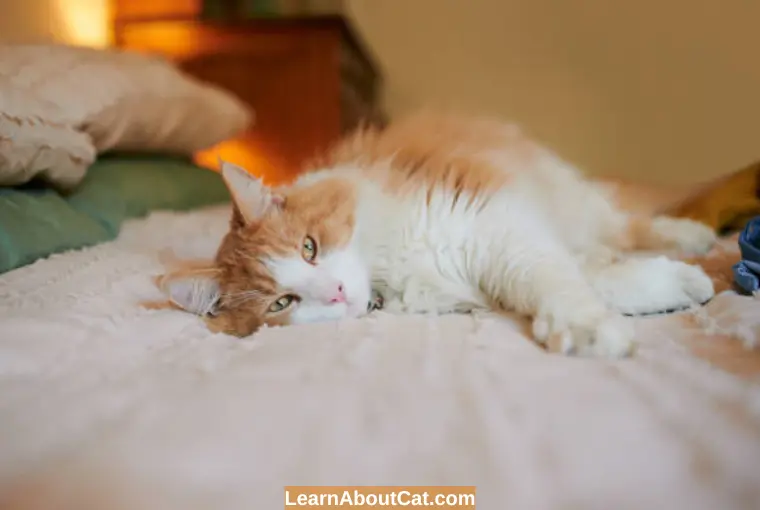
- Inflammation such as gastroenteritis or pancreatitis etc.
- Cancer, particularly bone cancer, oral squamous cell carcinomas, any type of cancer that causes an organ to enlarge (such as the kidney or spleen), and tumours that press on important internal organs.
- Ear Infection, particularly if the infection affects the middle or inner ear or has been present for a long time, cats that have ear infections may suffer from agonising discomfort.
- Digestive system obstruction, such as linear foreign body blockages
- Arthritis (joint inflammation): perhaps the hip, the elbow, or any other joint (s). (Remember that cats are far more likely than people think to suffer from the discomfort of misdiagnosed and untreated arthritis.)
- Periodontal disease or dental fracture (Frequently referred to as FORLs or “neck lesions”), dental resorption lesions
- Difficulties with the eyes, such as glaucoma, uveitis, or corneal ulcers.
- An obstruction in the urethra is caused by cystitis, an infection of the bladder.
It’s critical to contact or see your veterinarian whenever you believe your cat may be experiencing pain or exhibiting the pain symptoms we’ve listed above. To effectively treat and manage pain and avert tragedy, it is essential to pinpoint its underlying cause.
Interesting Reading: Why Is My Cat Drooling When Purring?
When Purring is Not a Sign of Pain
Positive emotions and circumstances can generate purring. Although purring is typically associated with favourable emotions, such as contentment and relaxation, cats can also purr during other situations. For instance, they may purr when they are excited, playful, or bonding with their owner.
- Bonding and socialization: Purring is also a method that cats use to connect with their owners or other cats. It creates a sense of comfort and security, which enhances the bond between the cat and its owner.
- Purring as a self-soothing mechanism: Some experts suggest that purring may have a self-soothing function for cats. It helps them to relax and reduces stress, which explains why they sometimes purr in stressful situations.
Medical Conditions That Affect Purring:
Medical conditions can impact a cat’s purring ability. A few medical conditions can affect a cat’s ability to purr. These may include respiratory issues, nerve damage, or other medical conditions that can affect the muscles and tissues in the throat and larynx.
- Chronic pain and long-term effects on purring: If a cat is experiencing chronic pain, it may affect its ability to purr. In such cases, cats may also undergo changes in their behavior or mood, such as being more irritable or reclusive. If left untreated, chronic pain can cause long-term health effects that decrease the cat’s overall quality of life.
Some More Signs and Symptoms of Pain in Cats
You probably know your cat better than the majority of people, even your doctor. Cat owners are typically the first to detect when something is amiss with their cherished feline friend, and this might include even the most subtle symptoms.
Knowing what is “normal” for your cat, including their typical attitude, activity level, stride, hunger, thirst, sleeping patterns, and other physical and behavioural traits, makes it much easier to see when they are acting differently.
Furthermore, they lack discrimination; thus, they could use their teeth, claws, or both to attack even close pals! This is particularly true if you touch or move the painful area, the cat senses you’re about to do so, or both.
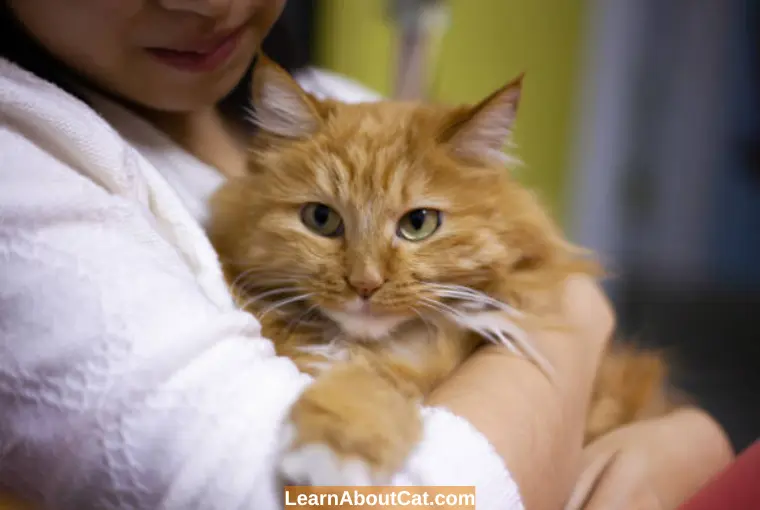
1. Breathing Modifications
A cat experiencing discomfort could breathe more swiftly or shallowly. Even start to pant. You could even notice a change in how your stomach and chest muscles move as both are engaged in breathing.
Normally, cats breathe 12 to 60 times each minute. Your findings will be inaccurate if your cat is sniffing, waking up, or moving about while you’re counting.
In general, a cat who is unwell or in distress may groom itself less regularly. However, a cat with a wound could overgroom the area, which will only cause them more pain and suffering.
2. Heart Rate and Pulse Changes
The cat’s heart beats at the same pace as its pulse when blood is pushed from the heart to the veins. When your cat is in pain or discomfort, its heart or pulse rate may possibly rise.
A cat’s heart typically beats between 160 and 200 times per minute while it is at REST (sleep). You may measure your cat’s heart rate at home similarly to how you test their respiratory rate by placing your hand on their chest, just below their elbow, counting their heartbeats for 15 seconds, then multiplying that figure by 4.
Given that a cat’s heart rate is often rather quickly, this may frequently be challenging to do. As a result, it could be more advantageous to base your assessment on other elements such as their respiration rate, demeanour, adjustments to their posture, etc.
3. Gum Colour
A cat’s gums normally have a light pink tinge; however, this can vary greatly if your cat will let it (without biting you! ), gently pull its lip. You may gently look at the gum’s colour.
White, grey, blue, or purple gums should not be present, as this may indicate that the tissues are not receiving enough oxygen. Furthermore, it shouldn’t be very red since this might indicate pain, inflammation, or elevated blood pressure.
You Might Like to Read:
5. Energy Level Changes
Pain frequently makes cats less active. This typically makes a cat sleep longer, but it may also make the cat less active in terms of running or jumping.
7. Changes in Eating or Drinking
Changes in eating or drinking: Your cat may begin to eat or drink less depending on where they feel uncomfortable. They could feel too uncomfortable to get up to get to their meal dishes.
8. Modifications to Movement
The pain usually results in a loss of mobility. Depending on what hurts, your cat may continue to move about as much but may seem somewhat different.
You might notice them limping, going up and down stairs more slowly, or not being as excited or able to leap as they previously were.
9. Changes in Bathroom Routines
Given how cats position themselves to pee and defecate in their litter boxes, pain may make them strain to do so! There could be less garbage for you to pick up as a consequence.
Cats may occasionally get constipation as a result of their struggle to go to the bathroom. It may be difficult for cats with painful joints or bones to use their litter boxes.
Why Do Cats Purr?
The function of purring is not fully understood, but there are several theories. Some researchers believe that purring may have a healing effect on the body, while others suggest that it’s a way for cats to communicate with each other or with humans.
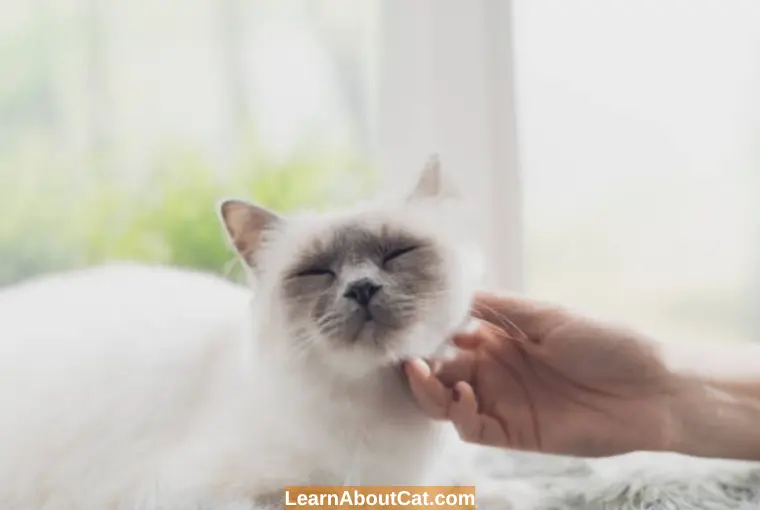
- Your cat could purr in unexpected situations, including during a car ride or as they wait in their carrier at the vet’s office. Its purr has the ability to soothe not only its owners but also the cat.
- A cat may purr when it is ravenous and pleading for food. These purrs are unique from other common purrs, according to scientific studies. Cats are rumoured to use their purr in conjunction with other threatening noises to get the desired response from their owners. Purrs that are caused by hunger are usually accompanied by other sounds.
- Cats have reportedly been seen purring in reaction to injury or illness. As was already said, when cats begin purring, their breathing begins to become better. Due to evidence that sound frequency might speed up physical recovery, you might also encounter this after an accident.
- The two things that make cats purr most frequently are happiness and love. Cats commonly headbutt and rub up against their owners while purring loudly, or they may even snuggle up and slowly purr on their lap. They could purr to express their gratitude for your presence and how much comfort you provide them.
- There is certainly a lot of purring going on if you’ve ever been around a mother cat and her kittens. This is mother and kitten talking to each other. Cats are born defenceless, hearing-impaired, and blind. The kittens begin purring a few days after birth to communicate their contentment to their mother. To soothe the kittens, the mother cat will purr.
Frequently Asked Questions
Should I take my cat to the vet if it’s purring excessively?
Excessive purring can be a sign of pain or discomfort, and it is always a good idea to seek veterinary care if you are concerned about your cat’s health. A veterinarian can assess your cat’s overall health and behaviour and determine if any treatment is necessary.
Can a cat purr when it’s scared or stressed?
Yes, cats can purr when they are scared or stressed. Purring is a complex vocalization that can indicate a range of emotions and physical states, including fear and anxiety.
Can purring have health benefits for cats?
Yes, studies have shown that purring may have a healing effect on bones and tissues, as well as a positive impact on a cat’s respiratory system and overall well-being.
How long do cats purr?
Cats can purr for different lengths of time, ranging from a few seconds to several minutes
Final Words
Contrary to popular belief, cats don’t always purr when they’re content. Illness and discomfort are included. The calming benefits of a cat’s purr help minimise pain-related stress and discomfort and speed up the healing process.
If you think your cat is in pain, take it to the vet so they can try to determine the cause and provide a recommendation for treatment. In the meanwhile, try feeding your cat some catnip. Catnip may help injured cats feel less pain and be more comfortable. While your cat heals, it’s crucial to give them the space they need while still giving them your love.
Related Posts:
Who is Isabella?
My name is Isabella, and I am a dedicated and knowledgeable cat enthusiast. With years of experience caring for cats and a deep love for felines, I made a mission to help other cat lovers navigate the challenges of cat ownership.



